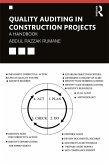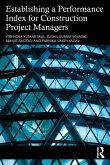46,95 €
46,95 €
inkl. MwSt.
Sofort per Download lieferbar

23 °P sammeln
46,95 €
Als Download kaufen

46,95 €
inkl. MwSt.
Sofort per Download lieferbar

23 °P sammeln
Jetzt verschenken
Alle Infos zum eBook verschenken
46,95 €
inkl. MwSt.
Sofort per Download lieferbar
Alle Infos zum eBook verschenken

23 °P sammeln
- Format: PDF
- Merkliste
- Auf die Merkliste
- Bewerten Bewerten
- Teilen
- Produkt teilen
- Produkterinnerung
- Produkterinnerung

Bitte loggen Sie sich zunächst in Ihr Kundenkonto ein oder registrieren Sie sich bei
bücher.de, um das eBook-Abo tolino select nutzen zu können.
Hier können Sie sich einloggen
Hier können Sie sich einloggen
Sie sind bereits eingeloggt. Klicken Sie auf 2. tolino select Abo, um fortzufahren.

Bitte loggen Sie sich zunächst in Ihr Kundenkonto ein oder registrieren Sie sich bei bücher.de, um das eBook-Abo tolino select nutzen zu können.
This book examines how safety failings during the use of any designed product or system - be it a car, a building or a chemical plant - can be mitigated through effective understanding of the conditions and controls surrounding its use.
- Geräte: PC
- ohne Kopierschutz
- eBook Hilfe
- Größe: 14.97MB
Andere Kunden interessierten sich auch für
![Effectively Managing the Case for Safety (eBook, ePUB) Effectively Managing the Case for Safety (eBook, ePUB)]() David EnglandEffectively Managing the Case for Safety (eBook, ePUB)46,95 €
David EnglandEffectively Managing the Case for Safety (eBook, ePUB)46,95 €![Construction Contracts (eBook, PDF) Construction Contracts (eBook, PDF)]() David ChappellConstruction Contracts (eBook, PDF)55,95 €
David ChappellConstruction Contracts (eBook, PDF)55,95 €![Practical Management for the Digital Age (eBook, PDF) Practical Management for the Digital Age (eBook, PDF)]() Martin BaumersPractical Management for the Digital Age (eBook, PDF)86,95 €
Martin BaumersPractical Management for the Digital Age (eBook, PDF)86,95 €![Quality Auditing in Construction Projects (eBook, PDF) Quality Auditing in Construction Projects (eBook, PDF)]() Abdul Razzak RumaneQuality Auditing in Construction Projects (eBook, PDF)46,95 €
Abdul Razzak RumaneQuality Auditing in Construction Projects (eBook, PDF)46,95 €![Project Management (eBook, PDF) Project Management (eBook, PDF)]() Vijay BansalProject Management (eBook, PDF)57,95 €
Vijay BansalProject Management (eBook, PDF)57,95 €![Appraisal and Selection of Projects (eBook, PDF) Appraisal and Selection of Projects (eBook, PDF)]() Utpal K. GhoshAppraisal and Selection of Projects (eBook, PDF)38,95 €
Utpal K. GhoshAppraisal and Selection of Projects (eBook, PDF)38,95 €![Establishing a Performance Index for Construction Project Managers (eBook, PDF) Establishing a Performance Index for Construction Project Managers (eBook, PDF)]() Virendra Kumar PaulEstablishing a Performance Index for Construction Project Managers (eBook, PDF)57,95 €
Virendra Kumar PaulEstablishing a Performance Index for Construction Project Managers (eBook, PDF)57,95 €-
-
-
This book examines how safety failings during the use of any designed product or system - be it a car, a building or a chemical plant - can be mitigated through effective understanding of the conditions and controls surrounding its use.
Dieser Download kann aus rechtlichen Gründen nur mit Rechnungsadresse in A, B, BG, CY, CZ, D, DK, EW, E, FIN, F, GR, HR, H, IRL, I, LT, L, LR, M, NL, PL, P, R, S, SLO, SK ausgeliefert werden.
Produktdetails
- Produktdetails
- Verlag: Taylor & Francis
- Seitenzahl: 176
- Erscheinungstermin: 30. Dezember 2022
- Englisch
- ISBN-13: 9781000802443
- Artikelnr.: 66873592
- Verlag: Taylor & Francis
- Seitenzahl: 176
- Erscheinungstermin: 30. Dezember 2022
- Englisch
- ISBN-13: 9781000802443
- Artikelnr.: 66873592
Andy Painting began his working career in the Royal Navy serving 23 years as a submariner. As a weapons engineer, his job involved tracing and rectifying faults with various components of submarines, as well as helping to design and test new and modified weapon systems. It was during one repair task, whilst hanging upside down trying to reach a valve that needed replacement, he began to wonder if the design of critical components could be improved. Endeavouring to find an answer, he took degrees in engineering and health and safety, which led to achieving a doctorate in 2015. The thesis for this doctorate was catastrophic failure in complex systems, which led to the creation of an administrative early warning system which can predict the early failure of virtually any type of engineering installation or system.
After the Navy, he became the Chief Engineer for Her Majesty's Naval Base at Portsmouth, where he was in charge of all the infrastructure supporting the Royal Navy's home dockyard. This included manoeuvring out of shipbuilding halls a component part of the Queen Elizabeth aircraft carrier. This brought the 600-year-old tradition of shipbuilding at Portsmouth to a close. In 2015, he left the dockyard to set up his own company providing engineering and health and safety advice to a range of clients including government, local authority, and military organizations. This advice is inherently based on an understanding of how to implement engineering solutions that reflect best practice with cost efficiency, balanced always with the safety of the end user in mind. He is a Fellow of the Safety and Reliability Society and a Chartered Engineer.
David England joined the civil service after leaving school, quickly learning administrative and management techniques as well as discovering a passion for the law. In the late 1980s he was involved in the supply and development of fibre optics which, at the time, was a nascent industry with very little regulation or standardization. This involved working with government bodies, scientists, and some of the largest component manufacturers in the world. For 25 years, he found himself in operational management in such industries as distribution, retail, and petrochemicals. In 1999 he found himself being asked to complete a risk assessment, without any guidance, of a facility he managed containing some 100,000 litres of petrol, and he wondered if health and safety was all it was cracked up to be.
Determined to find out, he undertook the prestigious NEBOSH Diploma in occupational health and safety and, in 2013, started a career as a consultant. This led to contracting as a CDM Coordinator working at HM Naval Base Portsmouth. Working on large, complex, and often high-value projects gave him a unique insight into the demands of the client, designer, and contractor, all of which had to be balanced against ensuring that the safety of the operatives remained paramount. Working in some extremely high-risk environments also influenced his opinion on providing practical and pragmatic safety advice. He is a Fellow of the International Institute of Risk and Safety Management. Both authors are Fellows of the Institute of Construction Management.
After the Navy, he became the Chief Engineer for Her Majesty's Naval Base at Portsmouth, where he was in charge of all the infrastructure supporting the Royal Navy's home dockyard. This included manoeuvring out of shipbuilding halls a component part of the Queen Elizabeth aircraft carrier. This brought the 600-year-old tradition of shipbuilding at Portsmouth to a close. In 2015, he left the dockyard to set up his own company providing engineering and health and safety advice to a range of clients including government, local authority, and military organizations. This advice is inherently based on an understanding of how to implement engineering solutions that reflect best practice with cost efficiency, balanced always with the safety of the end user in mind. He is a Fellow of the Safety and Reliability Society and a Chartered Engineer.
David England joined the civil service after leaving school, quickly learning administrative and management techniques as well as discovering a passion for the law. In the late 1980s he was involved in the supply and development of fibre optics which, at the time, was a nascent industry with very little regulation or standardization. This involved working with government bodies, scientists, and some of the largest component manufacturers in the world. For 25 years, he found himself in operational management in such industries as distribution, retail, and petrochemicals. In 1999 he found himself being asked to complete a risk assessment, without any guidance, of a facility he managed containing some 100,000 litres of petrol, and he wondered if health and safety was all it was cracked up to be.
Determined to find out, he undertook the prestigious NEBOSH Diploma in occupational health and safety and, in 2013, started a career as a consultant. This led to contracting as a CDM Coordinator working at HM Naval Base Portsmouth. Working on large, complex, and often high-value projects gave him a unique insight into the demands of the client, designer, and contractor, all of which had to be balanced against ensuring that the safety of the operatives remained paramount. Working in some extremely high-risk environments also influenced his opinion on providing practical and pragmatic safety advice. He is a Fellow of the International Institute of Risk and Safety Management. Both authors are Fellows of the Institute of Construction Management.
1. Introduction. 2. What is "safe". 3. Sources of risk. 4. Human
implications. 5. Demonstrating "safe". 6. Building the case for safety. 7.
Culture. 8. Operations. 9. Documentation. 10. Administration. 11.
Maintaining CODA. Works cited.
implications. 5. Demonstrating "safe". 6. Building the case for safety. 7.
Culture. 8. Operations. 9. Documentation. 10. Administration. 11.
Maintaining CODA. Works cited.
1. Introduction. 2. What is "safe". 3. Sources of risk. 4. Human
implications. 5. Demonstrating "safe". 6. Building the case for safety. 7.
Culture. 8. Operations. 9. Documentation. 10. Administration. 11.
Maintaining CODA. Works cited.
implications. 5. Demonstrating "safe". 6. Building the case for safety. 7.
Culture. 8. Operations. 9. Documentation. 10. Administration. 11.
Maintaining CODA. Works cited.







